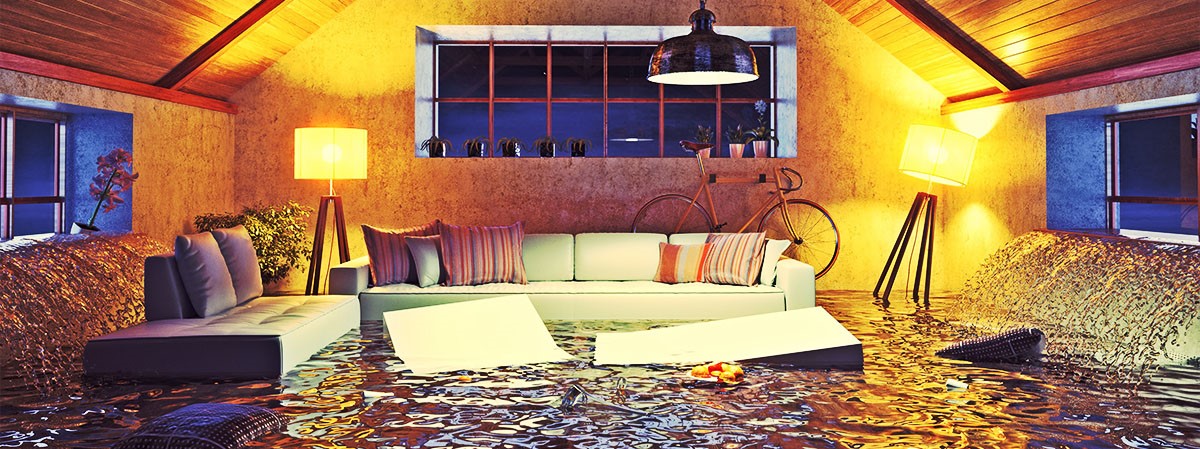Floods resulting from storms can cause significant damage to a residential property. For people living in a floodplain, the risk of flood damages automatically increases. When the floodwater reaches floor level and rises even an inch higher, it starts causing property damage. Therefore you must know the official measure of flood levels in your area. If you want effective prevention of your house from flood damages, an assessment of the occurrence of floods is necessary.
After that, you can perform a variety of preparatory and repair tasks. They can be the installation of a flood protection system and applying the sealant to the cracks in the foundation of your home. Furthermore, you can also check the additional emergency management measures recommended by a flood insurance agent. Here are some useful ways you can follow to help prevent flood damage.
1- Keep an Eye on Weather Forecast Frequently
If you live in a flood-prone neighborhood, you can sign up for emergency restoration service about floods that sends you an email, text message, or tweet. Watching and learning about the weather forecasts every day is equally important so that you have time to take precautions that can be applied before the arrival of storms.
2- Install the Water Sensor or Flood Detection System
You can easily select a top-rated water sensor or a flood detection system from the market as a bundle of options is available. These systems can be connected to the security system of a house to give a warning before the disaster strikes. Another advantage of having these systems is that they warn about the leakages.
3- Install the Check Valve on the pipe
Check the pipes carrying the storm water to the sewers for a check valve. If they don’t have one, make sure to get it installed if you want to prevent the storm water from running backward. Gate valves are preferred over swing gate valves because they provide better isolation from flood pressure.
4- Protection of Household Electrical Systems
According to the home safety experts, switches and sockets should be at least a foot above the flood level of the area. You must modify all of the other electrical systems as well that are below the flood level to avoid heavy damages related to electricity.
5- Elevation of Outdoor Equipment
The outdoor equipment such as fuel tanks and outdoor air conditioners units should get equal treatment as the indoor equipment of a house. You must anchor this equipment properly above the flood level to prevent any damages to them. If fuel tanks are left unanchored, severed supply lines will be left on the ground.
6- Regular Testing of a Sump Pump
Check the drain pump regularly and make sure the water can be removed at a sufficient rate in case of heavy rain. Consider having a backup battery or a power supply unit so that in the event of a power outage, the drain pump keeps on running till the restoration of the power. You can also purchase a sump pump with a battery backup built into the system.
7- Coatings and Sealants
Application coatings and sealants applied to the foundations, walls, windows, and doorways for flood protection help prevent floodwater from entering the home through cracks.
8- Sealing of the Basement Windows
Cellars or lower windows are properly sealed and caulked to improve water tightness. If your basement windows are old, installing a new one will be good. You will be able to seal the new windows much better than old ones, which reduces the risk of water entering your basement.
9- Maintenance of the Gutters
If there is anything that must keep on running in the best shape during times of heavy rainfall, that is the gutter. They direct the stormwater away from your property and keep it safe from possible flooding. Therefore, you must ensure that they are clean and free from blockages. Get the gaps and cracks inside the gutters filled and repaired timely.
10- Remove Debris from Ditches Regularly
Clean the leaves falling in the yards, especially from areas where they can easily access the drain pipes and cause blockages. You can use a rake to clean and remove blockages from the nearby storm sewers. If they have already caused severe blockages, it is very important to call the sewage department of the respective area.
11- Lawn Gradation
When the lawn is tilted towards the house, rainwater will be collected across the house. Reclaim the turf using heavy soil with clay and sand to allow surface runoff to flow to an appropriate location, for example, the gutter.
12- Landscaping
Landscaping done with the consideration of flood protection can be handy in making a certain route for the stormwater to flow away from your house. You must design accordingly to provide sufficient drainage to prevent your place from getting flooded.
13- Sandbag or Flood Bag
If bad weather is unavoidable, you can prevent water from entering by piling up sandbags or flood bags in vulnerable areas around buildings, such as entrances and drains.
Use the preventive measures shared above to protect your home and property from flood damages. Prepare yourself ahead of time, minimize these damages and save yourself from the costly repair work.


